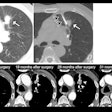Landing in the world of interventional radiology (IR) coding can make you feel like Dorothy in L. Frank Baum's The Wizard of Oz -- cyclone-tossed in a foreign land. Proper radiology coding is difficult under the best of situations, particularly so for those who are struggling to understand the nature of IR reimbursement.
IR uses imaging techniques to help perform minimally invasive procedures for diagnosing or treating diseases. The images provide the road map -- the proverbial yellow brick road -- that physicians follow to guide instruments through the body to areas of concern. Understanding specific IR terms and procedures helps coders comprehend the often confusing systems of IR reimbursement. Consider the following simple suggestions to help dissipate coding conundrums.
You're not in Kansas anymore
You're in a foreign land, so learn the language used in the land of IR, said Linda Gates-Striby, principal at Gates Physician Services in Indianapolis. First, decide whether the physician performed a selective or nonselective procedure, she said.
For a selective procedure, bill only for the end point for each vascular family addressed, not for all the "stops along the way," according to Gates-Striby. If the physician moves the catheter to another vascular family, check to see whether the procedure is selective or nonselective.
For example, interventional codes are "per vessel." So, if multiple problems occur inside one vessel, do not bill for each of them, according to Jim Collins, chief executive officer of the Cardiology Coalition in Matthews, NC.
Keep an eye out for signposts -- key phrases that signal either a selective or nonselective procedure, Gates-Striby said.
The following are a few key phrases:
- "Into the ostium" means in that vessel, and is therefore selective
- "Selectively engaged" means in that vessel, and is therefore selective
- "At the orifice" means outside the vessel at the opening, not selecting that vessel, and therefore is not selective
The terminology used in an IR report makes all the difference when coding a procedure, Collins said. Proper coding tells the insurer that the physician performed X procedure in Y artery.
"Radiologists don't always understand the importance of the documentation they provide," he said. "If they don't use the right words, they can cut reimbursement in half."
One healthcare system lost $43,000 because of dictation errors.
"Look at what a big difference proper word choice makes to your bottom line," Gates-Striby said.
The buddy system
Just as Dorothy never traveled without Toto, don't code in the land of IR without using the buddy system, Collins said.
"If (you don't), you are leaving a chunk of money on the table," he noted.
For example, pair pain procedure codes with the appropriate supervision and intervention codes, Collins said. There is not a one-to-one correlation with diagnostic and interventional procedures, just with the surgical code (3xxxx) and the accompanying imaging code (7xxxx). This holds true for each of the peripheral vascular interventions other than carotid and vertebral interventions.
"Interventional radiology coding differs from other types of coding because it involves component coding," said Melody Mulaik, president of Coding Strategies in Powder Springs, GA.
Poisoned poppies, flying monkeys, and other hazards
Count on coding pitfalls and numerous obstacles when traveling in the land of IR. Follow these tips to improve reimbursement:
- Use a map or diagram to illustrate how the physician performed the procedures, Gates-Striby said. This allows coders and carriers to visualize the procedure. It gives the codes more meaning, and the coders gain greater understanding of their effect on the revenue of the overall healthcare system.
"Make a transparency with IR codes on it," she said. "When you receive a report, simply flip to the chart and trace the path of the procedure, entering codes as you go. The billing systems will do the work for you after that."
- Hone communication skills, Mulaik said. Encourage physicians to use appropriate language and keep the lines of communication open.
"Everybody's struggling with this," she said. "Work together and make sure both sides bill appropriately and that it's all supported by documentation."
IR reports can get lengthy, and they should be, Mulaik noted.
"You're asking for a lot of money and you need to justify every single code that's assigned," she said.
- Apply "the black pen test" to IR documentation, Mulaik suggested. Cross out documentation related to a specific procedure and see what documentation remains to defend coding for any additional operations.
"There should always be information to defend every single code assigned," she said. "The procedure should never be implied. Good documentation contains all the information spelled out."
Overcome IR denials
When Dorothy presented the witch's broom to the Wizard of Oz, he didn't celebrate her accomplishment. In fact, he tried to turn her away.
Chances are, insurers will do the same to you.
"Getting accurate codes accounts for only half the problem, believe it or not," Gates-Striby said. "Then you have to get paid."
For example, codes for Medicare catheter placements and interventions are paid based on multiple surgical rules, she said. Insurers pay 100% reimbursement for the first procedure and 50% for the next four. If more procedures require reimbursement, insurers essentially base payment on information contained in the report.
Further, each code has a relative value unit (RVU). Medicare reimburses approximately $36 per RVU. Make sure that coders know and understand these simple facts.
"You could potentially cut reimbursement in half at the point of entry if you've swapped the reporting order of procedures," Gates-Striby said. "You want the highest RVU on the first line."
Enter the highest RVU code on line one of the claim, the second highest on line two, and so forth.
"You want to be paid 100% of the highest code, not 100% of a lower code," she noted.
Pull back the curtain on insurance claims by graphing the previous three months' worth of reimbursements from commercial entities, Gates-Striby advised. Consider setting up a Microsoft Excel spreadsheet file to track procedures, especially for commercial payors.
"Typical techniques do not catch decreased and inconsistent reimbursements," she observed.
Be on the lookout for duplicate denials on the same current procedural terminology (CPT) codes, watch for access codes denied with percutaneous transluminal angioplasty (PTA) codes, and keep an eye on stents inappropriately bundled with PTA, she said.
"You may be very surprised at what you find," Gates-Striby said. "We program ourselves to watch for denials, not underpayments. If you watch for this, you'll save money."
However, she noted that there remains no clean, clear-cut, across-the-board method to avoid denials. Although Dorothy had the power to return to Kansas all along, she needed to learn a few things first.
"When you have the same code for the same patient on the same day, denials are inevitable," Gates-Striby noted. "What gets through without an issue this week will likely get denied in the next week. Keep at it and don't get discouraged, it does get easier the more you know."
By Melissa Varnavas
AuntMinnie.com contributing writer
July 26, 2006
This article originally appeared in the Radiology Administrator's Compliance & Reimbursement Insider, a monthly newsletter published by HC Pro that is designed specifically for radiology administrators. For a free trial subscription, please click here.
Related Reading
The added value of ACR accreditation, June 13, 2006
Unlock success with strategy, research, April 27, 2006
Preparing for a JCAHO visit, April 18, 2006
Dealing with HIPAA changes in 2006, April 6, 2006
New endovascular repair CPT codes for 2006, March 7, 2006
Copyright © 2006 HC Pro



















